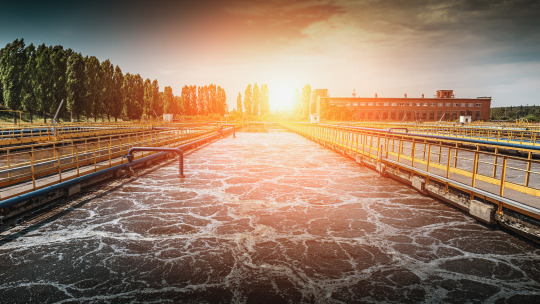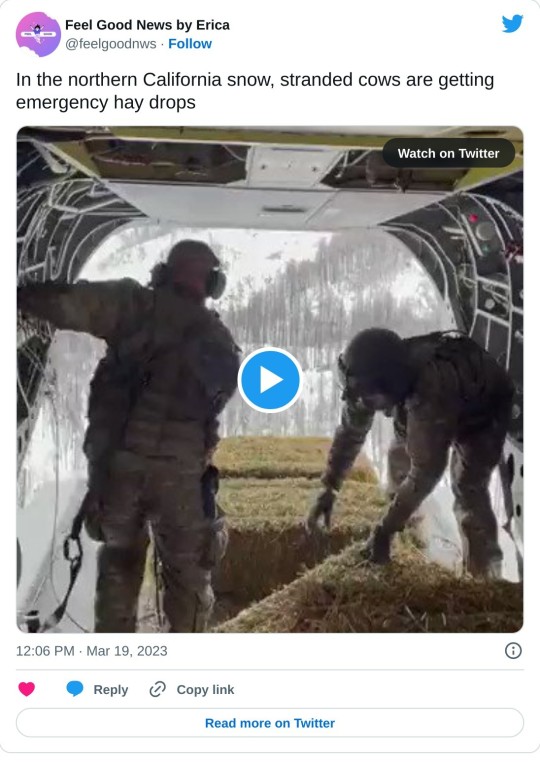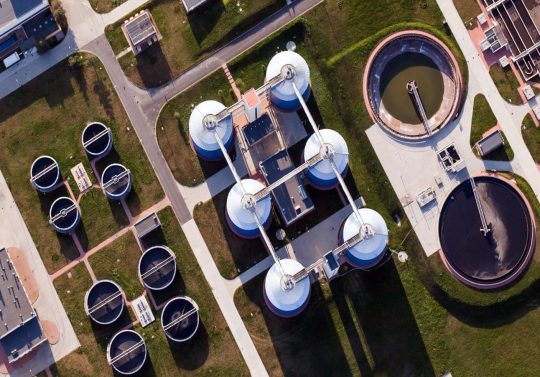#water treatment plant company in india
Explore tagged Tumblr posts
Text
Looking for turnkey solutions for your environmental project?
Look no further than Ravi Enviro Industries Pvt Ltd. Our years of experience and expertise cemented us as leading water treatment plant company in India. We offer turnkey projects like ETP, STP and RO plants, VOC systems, and products like agitators, filters, package plants and more. At Ravi Enviro Industries manufacturing in Vadodara, we also offer services and maintenance for industrial wastewater treatment plants. Contact us to further discuss your project.

#water treatment plant manufacturer in india#industrial water treatment plant manufacturers in india#water treatment plant company in india#water treatment plant suppliers in india#water treatment plant supplier in india#Ravi Enviro Industries manufacturing in Vadodara
1 note
·
View note
Text

Rest in peace, Dr. Manmohan Singh, a visionary leader and statesman.
Your wisdom and dedication shaped India's growth and prosperity.
You served with integrity, humility, and a deep sense of duty.
As Prime Minister, your reforms left an indelible mark on the nation.
Your contributions to India’s progress will never be forgotten.
A true architect of modern India, your legacy endures.
May your soul rest in peace, and your work continue to inspire.
#PrimeMinisterOfIndia #prime #primeminister #FormerPrimeMinisterOfIndia #manmohansingla #ManmohanSingh #indian #indiaprimeminister #delhi #DelhiElection #RIP #DelhiNews
#airblowersinchennai#industrial air blower#manufactring company#sludgedewatring#vacuum pumps#airblower#delhi#sewage treatment plant manufacturer#waste water#a1blowers#prime minister#india
1 note
·
View note
Text
Key Standards and Regulations for Water for Injection (WFI)
Water for Injection (WFI) plays a critical role in pharmaceutical manufacturing, and its production and use are governed by stringent standards and regulations. These guidelines are designed to ensure that WFI is free from contaminants, pyrogens, and microorganisms, safeguarding the integrity and safety of pharmaceutical products. This article explores the key standards and regulations that govern WFI and their significance in pharmaceutical applications.
What Makes WFI Unique in Pharmaceutical Applications?
Unlike regular purified water, WFI is held to the highest standards of purity due to its direct contact with sensitive pharmaceutical products, including injectables. It must meet specifications for:
Conductivity: A measure of ionic content.
Microbiological Purity: Absence of harmful microorganisms.
Endotoxin Levels: Pyrogen-free status.
The production, storage, and distribution of WFI must be carefully controlled to prevent contamination.

Pharmacopeial Standards for WFI
The production and quality of WFI are regulated by international pharmacopeias, which provide clear specifications.
United States Pharmacopeia (USP) USP defines WFI as highly purified water obtained through distillation or an equivalent process. It specifies:
Endotoxin levels of ≤0.25 EU/mL.
Conductivity requirements of ≤1.3 µS/cm at 25°C.
Zero microbial content in 100 mL samples.
European Pharmacopeia (EP) EP recognizes both distillation and membrane-based processes for WFI production. However, it emphasizes the need for additional validation for non-distillation methods.
Japanese Pharmacopeia (JP) JP aligns closely with USP and EP but has its own detailed requirements for WFI storage and distribution.
These pharmacopeias establish benchmarks for global manufacturers to ensure consistency and quality in WFI production.
Key Regulatory Authorities and Guidelines
FDA (U.S. Food and Drug Administration) The FDA ensures compliance with Current Good Manufacturing Practices (cGMP) for WFI production. Key requirements include validation of equipment, monitoring of production processes, and regular documentation.
EMA (European Medicines Agency) EMA focuses on compliance with EP standards and requires stringent validation for alternative production methods like reverse osmosis.
WHO (World Health Organization) WHO provides global guidelines for WFI, particularly for regions with developing pharmaceutical industries.
ISPE Baseline Guides The International Society for Pharmaceutical Engineering (ISPE) offers detailed recommendations for WFI system design, focusing on contamination control and energy efficiency.
Validation and Documentation Requirements
Regulatory compliance involves rigorous validation and documentation at every stage of WFI production. Key steps include:
Design Qualification (DQ): Ensuring that the system design meets regulatory requirements.
Installation Qualification (IQ): Verifying that equipment is installed correctly.
Operational Qualification (OQ): Confirming that the system operates within specified parameters.
Performance Qualification (PQ): Demonstrating consistent performance under actual production conditions.
Comprehensive documentation of these steps is essential to pass inspections and audits.
Challenges in Meeting Standards
Adhering to regulatory standards comes with challenges, including:
Stringent Validation: Extensive testing and documentation require significant time and resources.
High Costs: Complying with cGMP and pharmacopeial standards involves investment in high-quality equipment and training.
Evolving Regulations: As standards evolve, systems must be updated to maintain compliance.
Future Directions in Regulatory Compliance
Advancements in monitoring technologies are making compliance easier. Automated systems with real-time monitoring capabilities ensure adherence to parameters like conductivity and microbial levels. Additionally, sustainability-focused regulations are encouraging the adoption of energy-efficient WFI production methods.
Conclusion
Meeting regulatory standards for WFI is non-negotiable in pharmaceutical manufacturing. Compliance ensures the safety and efficacy of pharmaceutical products, upholding the trust of healthcare providers and patients alike.
Swjal Process is a leading pharmaceutical-grade water generation and distribution plant manufacturer in India.
#wfi#water for injection plant#water for injection system#water for injection generation#water for injection distribution system#pharmacutical industry#biotech industry#Swjal Process#Water solution company in India#Water treatment process plant manufacturers
0 notes
Text
Aquarius Projects | Water Purification Plant | Vadodara | Gujarat | India
Aquariusprojects provide many service like water purification, Plant operation analysis, refurbishment and retrofit service, water waste solution. Our plant is best place for water treatment in Vadodara, Gujarat, India.

#water purification in vadodara#plant operation analysis in gujarat#refurbishment and retrofit service in India#water waste solution in vadodara#water waste plant spare part in gujarat#water purification system in india#industrial water treatment systems in vadodara#best reverse osmosis system in gujarat#reverse osmosis filter system in india#ceramic filtration system in vadodara#best water treatment company in gujarat#best RO system in india
0 notes
Text

From the day of inception, we have been honest in our services. It helps us to raise ourselves as the best water treatment company in Trivandrum.
#purification#startup#waste management#wastewatertreatment#water purifier#watercolor#waterpurifier#watertreatment#effluent treatment plant#kerala#trivium#water plants#waterfall#companies#wastewater data#zero waste#environmentallyfriendly#technology#wasteland#air purifier#ultrafiltration#ultraviolet#ultraverse#reverse osmosis#osmosisdreams#keralis#india#artists on tumblr#tumblr milestone#writers on tumblr
1 note
·
View note
Text
#sewage treatment plant manufacturers in india#sewage treatment plant#wastewater treatment plant#sewage treatment#domestic sewage treatment plant#sewage treatment plant in delhi#sewage treatment plant manufacturer#water treatment plant manufacturers#sewage treatment plant suppliers#water treatment plant suppliers#stp plant manufacturer#water treatment plant in delhi#wastewater treatment plant manufacturers#stp plant supplier#wastewater treatment plant delhi#wastewater treatment plant suppliers#wastewater treatment companies in delhi ncr#stp ro plant#stp plant#sewage treatment plant near me#small sewage treatment plant#sewage treatment systems#wastewater treatment system#sewage water treatment#home sewage treatment plant#package treatment plant#wastewater treatment companies#sewage plant#Sewage Treatment Plant Manufacturer
0 notes
Text
Aquarius Projects | Water Purification and Waste Water Plant | Vadodara | Gujarat | India
Aquariusprojects provide many service like water purification, Plant operation analysis, refurbishment and retrofit service, water waste solution. Our plant is best place for water treatment in Vadodara, Gujarat, India.

#water purification in vadodara#plant operation analysis in gujarat#refurbishment and retrofit service in India#water waste solution in vadodara#water waste plant spare part in gujarat#water purification system in india#industrial water treatment systems in vadodara#best reverse osmosis system in gujarat#reverse osmosis filter system in india#ceramic filtration system in vadodara#best water treatment company in gujarat#best RO system in india
0 notes
Text
What do operating and maintenance do for water treatment
Water treatment has become crucial at present, where resources are decreasing at a rapid pace it has come to a point where we are recycling the same resources and using them again. The same can be said for water although 75% of the world is water, we are unable to utilize it to its full potential. Many industrial treatment companies in India are focusing on wastewater treatment at present. Euroteck is a water treatment company in India that focuses on this process. So how can operating and maintaining help in water treatment? This article is here to discuss this very topic.
Modern society relies heavily on water treatment to make sure that the water we use and consume is safe. STP operation and maintenance services of water treatment facilities are critical for guaranteeing their efficacy and lifespan, despite the fact that the treatment of water comprises many stages and complex technology.
water management companies in India are exceedingly meticulous and stringent about upkeep and operation. Operating water treatment facilities entails a variety of structured activities and responsibilities that are necessary for the daily administration of the treatment process. The operational aspect's main tasks and responsibilities are as follows:
Monitor and control:
Operators are in charge of continuously observing the various stages of treatment, such as chemical dosage, filtration, and disinfection. To make sure that water quality standards are met within acceptable bounds, they use a variety of devices and sensors. To avoid problems with water quality, a quick reaction to any deviations is necessary.
Flow and Pressure Management:
Water pressure and flow through the treatment system are under the constant control of the operators. For effective treatment and distribution, the appropriate flow rates are crucial.
Water treatment plant maintenance
Daily operations include routine checks of the machinery, valves, pumps, and other parts. Quickly identifying and taking care of any maintenance requirements provides uninterrupted service and helps prevent disruptions.
Data Logging and Reporting:
Operators keep meticulous records of all operational issues, chemical usage, and process parameters. For regulatory compliance and troubleshooting, this data is essential.
The synergy between Operation and maintenance:
The seamless integration of operations and maintenance is essential for effective water treatment in India. Operators must inform the maintenance staff of any problems or abnormalities they notice while doing their usual duties so that they can take immediate action. On the other hand,
maintenance staff give operators important input about the state of the equipment and the necessity for preventive measures.
The provision of safe and clean water to communities is ensured by ETP operation and maintenance of water treatment plants. Operators manage daily operations while maintenance personnel make sure that the equipment and infrastructure are kept in top working order. These activities are linked. Together, they play a crucial part in preserving environmental sustainability and public health by making high-quality water solutions available for domestic use, industrial use, and other purposes. Their commitment and diligence guarantee the dependability and safety of the tap water we take for granted.
#etp operation and maintenance#Water treatment plant maintenance#STP operation and maintenance services#wastewater treatment#industrial treatment companies#water treatment company in India#water management companies in India
0 notes
Text
Kelvin Water Technologies are provide an Effluent Treatment Plant (ETP) is a facility designed to treat and purify industrial wastewater or effluent before it is discharged into the environment or municipal sewage systems. The main objective of an ETP is to remove or reduce pollutants, contaminants, and harmful substances present in the wastewater to comply with environmental regulations and protect the environment. https://kelvinwatertreatment.com/effluent_treatment_plants.html
#effluent treatment plant manufacturers#water treatment plant#etp plant manufacturer in india#etp manufacturer company in delhi
0 notes
Text
Best Manufacturers of Water Treatment Systems in India
Introduction:
In the realm of water treatment plant manufacturing, the success of any project hinges not only on advanced technology and equipment but also on an efficient and competent workforce. Staffing plays a crucial role in ensuring the smooth operation, quality control, and overall productivity of water treatment plants in India, a country grappling with water scarcity and pollution challenges, water treatment plant manufacturers face unique staffing considerations. This blog aims to explore the key aspects of staffing for water treatment plant manufacturers in India, with a specific focus on the keyword Water Treatment Plant Manufacturers in India.

Understanding the Workforce Requirements:
Manufacturing water treatment plants requires a diverse range of skills and expertise. While some positions may be specialized, others demand a broader skill set. As a water treatment plant manufacturer in India, it is essential to identify the specific roles and responsibilities required in your organization. These may include design engineers, project managers, technicians, operators, quality control specialists, and administrative staff.
Recruitment Strategies:
To attract and hire talented professionals in the water treatment industry, it is crucial to implement effective recruitment strategies. Here are a few tips:
a. Online Presence: Build a strong online presence through a professional website and social media platforms. Highlight your organization's values, projects, and career opportunities to engage potential candidates.
b. Industry Networks: Leverage industry-specific networks, forums, and job portals to connect with experienced professionals in water treatment plant manufacturing.
c. Collaborate with Educational Institutions: Establish partnerships with technical and engineering institutes to tap into fresh talent and create internship programs that provide hands-on experience.
d. Referrals: Encourage your existing employees to refer qualified candidates. Offering incentives can boost employee engagement in the recruitment process.
Training and Skill Development:
Given the specialized nature of water treatment plant manufacturing, providing ongoing training and skill development programs is crucial. Invest in training initiatives that enhance the technical knowledge and expertise of your workforce. Stay updated with the latest advancements in water treatment technologies and encourage employees to participate in relevant workshops, seminars, and certifications.
Compliance with Regulations and Standards:
Water treatment plant manufacturers in India must comply with various regulations and standards set by governmental bodies and environmental agencies. Ensure your staff members are well-versed in these regulations and provide them with the necessary training to maintain compliance. Emphasize the importance of safety protocols and the responsible handling of chemicals and hazardous substances.
Retention and Employee Satisfaction:
Retaining skilled employees is vital for the long-term success of your organization. Foster a positive work culture by promoting open communication, recognizing employee achievements, and providing growth opportunities. Offer competitive compensation packages, benefits, and incentives to attract and retain top talent in the water treatment industry.
Conclusion:
Staffing is a critical aspect of water treatment plant manufacturing in India. By understanding the specific workforce requirements, implementing effective recruitment strategies, providing continuous training, ensuring compliance, and focusing on employee retention, water treatment plant manufacturers can build a skilled and dedicated workforce capable of delivering high-quality products and services. As the demand for water treatment solutions continues to grow in India, investing in staffing considerations will undoubtedly contribute to the success and sustainability of your organization in the long run.
#Water Treatment Plant Manufacturers in India#Sewage Treatment Plant Manufacturers in India#Operation and Maintenance of Water Treatment#Operations and Maintenance in Facility Management#Water Treatment Plant Project#Sewage Treatment Plant Project#Effluent Treatment#Water Treatment Companies in India#Best Water Treatment Companies
1 note
·
View note
Text
How to Choose the Right Water Treatment Company for Your Home

Looking for a reliable water treatment company for your home? Cleantech Water offers professional solutions tailored to your needs. From water purification to filtration systems, trust us to provide efficient and effective services. Ensure clean and safe water for your household. Visit us now!
0 notes
Text
The Best News of Last Week - March 20, 2023
🌱 - Okra to the Rescue and Other News You Can't 'Lettuce' Miss This Week
1. 4 day work week being pushed in Congress

Progressive Democrats, led by Rep. Mark Takano of California, are pushing for a four-day workweek to give Americans more time for leisure outside of work. The proposed Thirty-Two Hour Workweek Act would amend the Fair Labor Standards Act of 1938 to require overtime pay for any employee working more than 32 hours in a week at a rate of time and a half.
More than 70 British companies have started to test a four-day workweek, and halfway through the six-month trial, most respondents reported there has been no loss in productivity.
2. Governor Walz signs universal school meals bill into Minnesota law

Minnesota just became the fourth state in the US to provide breakfasts and lunches at no charge to students at participating schools! The bill was signed into law by Governor Tim Walz on Friday, and it's set to ease the burden on parents who struggle to provide meals for their children.
The new legislation will cover the cost of meals for all students, regardless of household income. This means that families who don't qualify for free and reduced meals but who struggle to pay for food will also be covered. The bill is also meant to prevent "lunch shaming" practices, where children are denied food or given substitutes that indicate their family is struggling financially.
3. Texas Researchers Use Okra to Remove Microplastics from Wastewater

Researchers from Tarleton State University in Fort Worth, Texas discovered that food-grade plant extracts from okra have the power to remove microplastics from wastewater. Polysaccharide extracts from plants like fenugreek, cactus, aloe vera, tamarind, and okra were found to be effective non-toxic flocculant alternatives to remove microplastics from water.
Polysaccharides from okra and fenugreek were best for removing microplastics from ocean water, while a combination of okra and tamarind worked best for freshwater. Furthermore, plant-based flocculants can be easily implemented in existing water treatment facilities.
4. In the northern California snow, stranded cows are getting emergency hay drops

The recent wave of unprecedented snowfall in California has left cattle stranded and starving. When rancher Robert Puga ran out of hay, neighboring Humboldt County officials put together an emergency rescue operation called "Operation Hay Drop." State, federal, and local officials airdropped stranded cattle bales of hay to feed them.
Humboldt County Sheriff William Honsal went to the Coast Guard with the idea of a helicopter rescue, and by midday Sunday, March 5, Operation Hay Drop was underway. So far, Operation Hay Drop has been a success, said rancher Puga. The mission covers about 2,500 head of cattle over several miles.
5. Make-A-Wish Foundation no longer considers Cystic Fibrosis to be automatically qualifying due to improvements in life outcomes for patients

Given the ongoing life-changing advances in cystic fibrosis, beginning in January 2024, cystic fibrosis will no longer automatically qualify for a wish.
6. 1st woman given stem cell transplant to cure HIV is still virus-free 5 years later

In 2017, a woman known as the "New York patient" underwent a stem cell transplant to treat both her cancer and HIV. Now, about 30 months later, she has been virus-free and off her HIV medication, leading some researchers to suggest that she may have been cured of HIV.
The New York patient, received stem cells taken from umbilical cord blood that also had the HIV-resistance genes. However, it's important to note that there is no official distinction between being cured and being in long-term remission, and the medical team is waiting for longer-term follow-up before making any definitive statements.
7. Cheetahs Back in Wild in India After Seven Decades

Namibian cheetahs have been successfully reintroduced to India after the world's fastest land animal was declared extinct in the South Asian country more than 70 years ago. Two cheetahs, Obaan and Asha, were released into the wild of Kuno National Park after being brought to India last September.
The species is being reintroduced on an experimental basis as part of a major prestige project for Prime Minister Narendra Modi. India aims to bring in about 100 of the big cats over the next decade. The African cheetah is a different subspecies from the extinct Asiatic cheetah, which once roamed the sub-continent in great numbers.
Lastly, I recently opened a Youtube channel. Subscribe for a weekly compilation of feel good videos.
- - -
That's it for this week :) If you liked this post you can support me with a small kofi donation:
Buy me a coffee ❤️
Let's carry the positivity into next week and keep spreading the good news!
640 notes
·
View notes
Text
The Sign of Four: The Strange Story of Jonathan Small (Part One of Two)
I will split this in two parts as I've got a lot to cover here.
CW for discussions of nasty prison conditions.
The depth of the Thames is about 6.5 metres at low tide in Woolwich, near to the Plumstead Marshes as they were then. However, the river has strong currents and very little visibility, so it would be a risky operation even with 2024 diving technology for some rather small objects.
The rupee originally was a silver coin dating back to ancient times in India, becoming something of a standard currency during the Mughal period. The East India Company introduced paper rupees and while there was an attempt by the British to move their territory to the pound sterling, they soon gave up, minting their own rupees with the British monarch's head on. The currency was also non-decimal. India retained the currency post-independence and went decimal as well.
Mangrove trees are very common in equatorial coastline regions - they can remove salt from the water, which would kill many other trees.
Prisoners set to the Andaman Islands penal colony were forced to work nine to ten hours a day to construct the new settlement, while in chains. Cuts from poisonous plants and friction ulcers from the chains would often get infected, resulting in death.
The convict huts on Ross Island were two-storey affairs, with the bottom as a kitchen and took area, the prisoners sleeping on the upper floor. Designed this way as an anti-malaria measure, they however leaked and the prisoners themselves were constantly damp from the rainfall, offering them little protection from the mosquitoes in any event.
Ague is an obsolete term for malaria; adults experience chills and fever in cycles.
The British would conduct experiments with quinine as a malaria treatment by force-feeding it to the prisoners. This caused severe side effects.
The British would make use of locals as warders, who wore sashes and carried canes. I'd imagine they could probably be quite brutal.
Pershoe is a small town on the River Avon near Worcester. It has a railway station with an hourly service to London, taking just under two hours today.
"Chapel-going" in this context means that the people attended a non-conformist church i.e. not one part of the Church of England.
"Taking the Queen's/King's shilling" was a historical term for joining the armed forces - for the army this was officially voluntary, but sailors could be forcibly recruited, being known as "press-ganged" until 1815. You would be given the shilling upon initial enlistment or tricked into taking it via it being slipped into your opaque beer. You would return the shilling on your formal attestation and then receive a bounty which could be pretty substantial in terms of the average wage, although a good amount of that would then be spent on your uniform. Some enlisted, deserted and then reenlisted multiple times to get multiple payments. The practice officially stopped in 1879, but the slang term remains.
The 3rd Buffs refers to the latter 3rd Battalion, Buffs (East Kent Regiment), a militia battalion that existed from 1760 to 1953, although it effectively was finished in 1919. However, in reality, they did not go to India to deal with the rebellion, instead staying in Great Britain to cover for the regular regiments who did.
The British never formally adopted the Prussian "goose step" instead going for the similar, but less high-kicking, slow march.
The musket would possibly have been the muzzle-loaded Enfield P53, a mass-produced weapon developed at the Royal Small Arms Factory in Enfield. It was itself was the trigger of the Indian Rebellion in 1857 due to the grease used in the cartridges. They would also be heavily used in the American Civil War on both sides, especially the Confederate one as they smuggled a lot of them, with only the Springfield Model 1861 being more widely used. As a result, they are highly sought after by re-enactors. The British used them until 1867, when they switched to the breech-loading Snider-Enfield, many of the P53s being converted.
The crocodile would likely have been a gharial, which mainly eat fish. Hunting and loss of habitat has reduced their numbers massively, with the species considered "Critically Endangered" by the IUCN.
"Coolie" is a term today considered offensive that was used to describe low-wage Indian or Chinese labourers who were sent around the world, basically to replace emancipated slaves. Indentured labourers, basically - something the US banned (except as a riminal punishment) along with slavery in 1865. In theory they were volunteers on a contract with rights and wages, however abuses were rife. Indentured labour would finally be banned in British colonies in 1917.
Indigo is a natural dark blue dye extracted from plants of the Indigofera genus; India produced a lot of it. Today, the dye (which makes blue jeans blue) is mostly produced synthetically.
I have covered the "Indian Mutiny" as the British called it here in my post on "The Crooked Man".
The Agra Fort dates back to 1530 and at 94 acres, it was pretty huge by any standards. Today, much of it is open to tourists (foreigners pay 650 rupees, Indians 50), although there are parts that remain in use by the Indian Army and are not for public access.
"Rajah" meaning king, referred to the many local Hindu monarchs in the Indian subcontinent; there were also Maharajahs or "great kings", who the British promoted loyal rajahs to the rank of. The Muslim equivalent was Nawab. However, a variety of other terms existed. The East India Company and the Raj that succeeded them used these local rulers to rule about a half their territory and a third of the population indirectly, albeit under quite a bit of influence from colonial officials. These rulers were vassals to the British monarch; they would collect taxes and enforce justice locally, although many of the states were pretty small (a handful of towns in some cases) and so they contracted this out to the British. As long as they remained loyal, they could get away with nearly anything.
562 of these rulers were present at the time of Indian independence in 1947. Effectively abandoned by the British (Louis Mountbatten, the last Viceroy, sending out contradictory messages), nearly all of them were persuaded to accede to the new India, where the nationalists were not keen on them, with promises they could keep their autonomy if they joined, but if not, India would not help them with any rebellions. Hyderabad, the wealthiest of the states, resisted and was annexed by force. The ruler of Jammu and Kashmir joined India in exchange for support against invading Pakistani forces, resulting in a war. A ceasefire agreement was reached at the beginning of 1949, with India controlling about two-thirds of the territory; the ceasefire line, with minor adjustments after two further wars in 1965 and 1971, would become known as the Line of Control, a dotted line on the map that is the de facto border and one of the tensest disputed frontiers on the planet.
India and Pakistan initially allowed the princely rulers to retain their autonomy, but this ended in 1956. In 1971 and 1972 respectively, their remaining powers and government funding were abolished.
Many of the former rulers ended up in a much humbler position, others retained strong local influence and a lot of wealth. The Nizam of Hyderbad, Mir Osman Ali Khan was allowed to keep his personal wealth and title after the annexation in 1948 - he had been the richest man in the world during his rule and used a 184-carat diamond as a paperweight, at least until he realised its actual value. The current "pretender", Azhmet Jah, has worked as a cameraman and filmmaker in Hollywood, including with Steven Spielberg.
15 notes
·
View notes
Text
Aquarius Projects | Innovative Waste Water Treatment Solutions
Aquarius Projects offers innovative water treatment solutions ranging from purification to conservation, utilizing sustainable technologies to meet your needs

#water purification in vadodara#plant operation analysis in gujarat#refurbishment and retrofit service in India#water waste solution in vadodara#water waste plant spare part in gujarat#water purification system in india#industrial water treatment systems in vadodara#best reverse osmosis system in gujarat#reverse osmosis filter system in india#ceramic filtration system in vadodara#best water treatment company in gujarat#best RO system in india
0 notes
Text
TWIN LOBE ROOTS AIRBLOWERS
S.V.ENGINEERS
About Us: S.V. Engineers
www.svblowers.in
Welcome to S.V. Engineers, where every journey begins with a vision and every success story starts with dedication. Established in 2009 in the vibrant city of Chennai, Tamil Nadu, S.V. Engineers embarked on its entrepreneurial voyage under the dynamic leadership of A. Sankar, a visionary at the tender age of 23. With divine grace, the blessings of elders, and the unwavering support of friends and family, what started in a modest space spanning below 100 sq.ft blossomed into a thriving enterprise.
In its nascent stages, S.V. Engineers focused on the meticulous servicing of air blowers and pumps, catering exclusively to the Chennai market. However, fueled by ambition and a commitment to excellence, within three years, the company witnessed exponential growth. A pivotal turning point was reached when S.V. Engineers diversified its offerings to include sales of a myriad of esteemed brands encompassing air blowers (Everest, Kay, Ingersoll Rand) and pumps and motors (Kirloskar, CG, CRI).
The driving forces behind S.V. Engineers' meteoric rise are rooted in Sankar's indefatigable work ethic, unwavering positivity, and lofty aspirations for his business. With each passing day, the company's footprint extended beyond Chennai, encompassing the entirety of Tamil Nadu, Kerala, Andhra Pradesh, Telangana, Karnataka, Puducherry, and Goa.
Our Services
At S.V. Engineers, we specialize in the sales and service of industrial air and water application products. Our comprehensive range of offerings includes:
Industrial Air Blowers: From twin lobe roots air blowers to centrifugal blowers, inlet blowers, axial fans, cabinet & circular inline fan blowers, fresh air ventilation blowers, and exhaust blowers, we cater to various industrial applications with precision and reliability.
Industrial Water & Wastewater Plant Equipments: We provide sales and service for all types of water pumps, STP & ETP sludge filter presses, oil skimmers, and aeration air blowers, ensuring the smooth operation of water treatment facilities.
Our Clientele
S.V. Engineers takes pride in its esteemed clientele, comprising leading companies across South India. Our commitment to excellence and customer satisfaction has garnered us a reputation as a trusted partner in the industrial sector.
Present Day: 2024
Fast forward to the present day, and S.V. Engineers operates from a spacious 1000 sq.ft facility located in Velapanchavadi, Chennai. Despite the growth and expansion, our core values remain unchanged – integrity, quality, and customer-centricity.
Join us at S.V. Engineers as we continue to redefine standards and push the boundaries of excellence in the industrial sector. Experience the difference with S.V. Engineers, where innovation meets reliability, and every solution is crafted with care.
#airblowers#aeration system#twin lobe roots blowers#stp blowers#etp blowers#sales & service#tamilnadu chennai#ring blowers#side channel blowers#centrifugal blowers#id fan blowers#inline & inlet bllowers
2 notes
·
View notes
Text
UMPESL: Leading MEP Solutions Provider in India | Waste Water Treatment & Energy Generation
UMPESL is a top-tier MEP company offering comprehensive MEP solutions in India. Our expertise spans from cutting-edge MEP services to sustainable waste water treatment plants and efficient energy generation systems.
2 notes
·
View notes